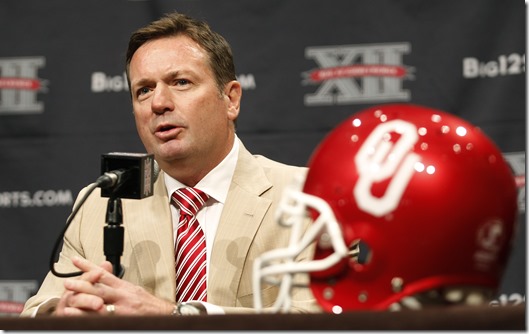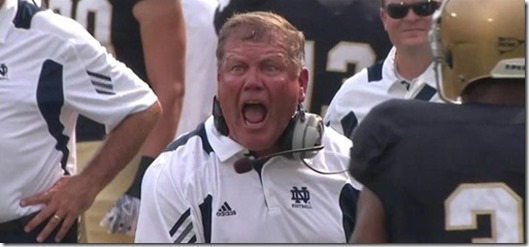2016 conference previews
College football is now two years removed from a significant restructuring and – surprise – the specter of further conference realignment still lingers. With the creation of a four-team playoff and a hierarchy of five ostensibly equal power conferences, it was perhaps inevitable that one conference would consider itself at a disadvantage – and that conference is the Big 12. They were the big loser of the last round of realignment: Nebraska, Missouri, Texas A&M, and Colorado all found more stable homes in three separate conferences and the Big 12 added TCU (great on the football field, horrible on the hardwood) and West Virginia from mid-major leagues to compensate. They’re the only conference without a championship game, which is perceived to be a significant disadvantage. That they missed out on the playoff in one of the two years of its existence has driven them to question whether expansion might improve the league – though apparently immediate action is unlikely. However, it’s a pretty good bet that the Big 12 won’t exist in its current form in five years.
It’s worth noting that some of the different members of the conference have disparate goals (which isn’t the case in most other Power Five leagues). Texas is content with the present arrangement, which enriches itself with the lucrative (for Texas) Longhorn Network contract and effectively exists as the celestial body around which all others orbit in the Big 12. They and the other Texas schools are probably quite leery of Houston (arguably the best candidate for Big 12 expansion); promoting TCU to the Power 5 level has weakened its neighbors and with Tom Herman at the helm at UH, it’s easy to envision history repeating itself. Oklahoma isn’t happy with looking up at Texas in the Big 12 power structure but – perhaps because it’s saddled with Oklahoma State – can’t flee to the Pac-12 or SEC. West Virginia probably wants expansion to bring more geographically proximate foes into the league. Iowa State’s just happy (and a little confused) to be here.
[hit the JUMP for the rest]
Obligatory
NOTE: Since most of us can’t remember who’s in what division without looking it up, the Coastal teams are Duke, Georgia Tech, Miami, North Carolina, Pitt, Virginia, and Virginia Tech. The Atlantic teams are Boston College, Clemson, Florida State, Louisville, North Carolina State, Syracuse, and Wake Forest. No, it doesn’t make sense to me either.
Like the Big Ten, the ACC suffers from imbalanced divisions (though to a lesser extent) – the winner of the annual Atlantic Division matchup between Clemson and Florida State has gone on to win the conference five years running, and there’s a very good chance that it will remain the case this season. The ACC’s nonsensical division split was designed to keep Florida State and Miami – the two clear powers back then – in separate divisions with the possibility of a championship game rematch (which still hasn’t happened). Miami’s struggles since joining the ACC, as well as Clemson’s rise under Dabo Swinney, has made for a “Big Two, Little Twelve” situation, with both power programs sharing a division. The league’s well-documented parity – or mediocrity, depending on your point of view – behind those two has left an amorphous tier of programs fighting for the scraps beneath FSU and Clemson. For the other teams in the Atlantic, there’s an enormous mountain to climb and cracking the top two would be a monumental achievement, based on the presumed staying power of the Noles and the Tigers.
The Coastal is a different story. Though Georgia Tech and Virginia Tech have most often represented the division in the ACC Championship Game, UNC and Duke have each won the division in the past three years. With GT and VT in states of uncertainty (the former went 3-9 last season, the latter is replacing a legendary coach who saw the program atrophy in the last few years of his reign), the Coastal is quite unpredictable. Miami and Virginia Tech, ostensibly the programs with the most inherent advantages in the division, are breaking in new coaches (Mark Richt and Justin Fuente). Like their in-state rival, Virginia also made a good hire (Bronco Mendenhall). ACC newcomer Pitt was a pleasant surprise under first-year head coach Pat Narduzzi* and with Penn State’s malaise, they could be primed to build a formidable program there. Duke and Carolina are actually seeing some gridiron success these days. While the Atlantic will deservedly receive more attention from the college football world at-large, the Coastal has a lot of intriguing subplots for the more diehard college football junkie.
*please don’t go to State when Dantonio retires
[Team previews after the JUMP]


63